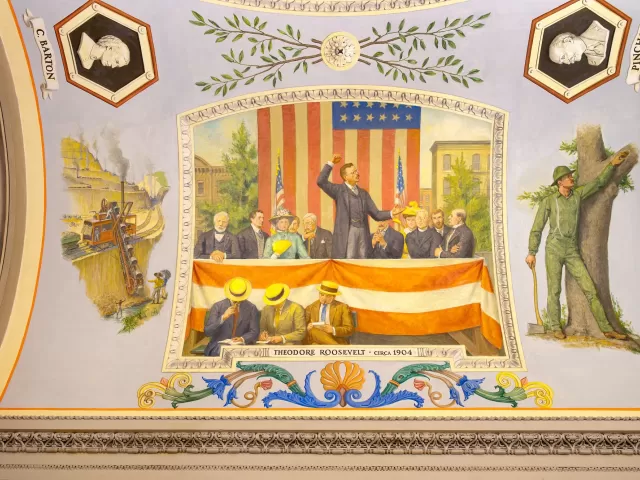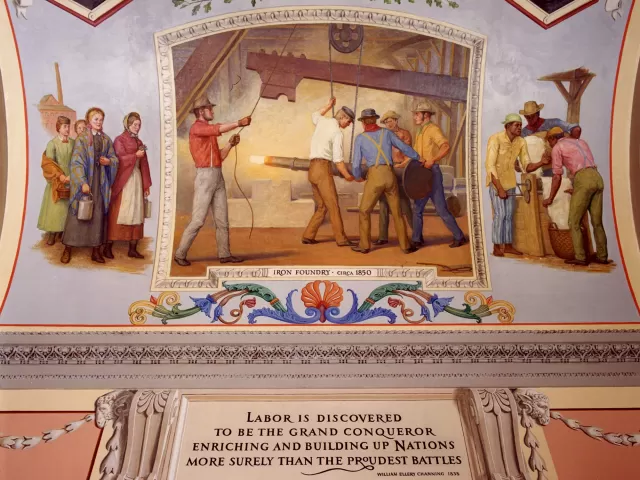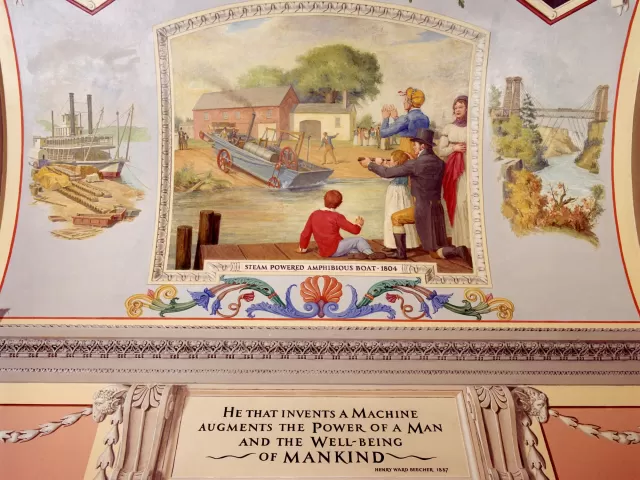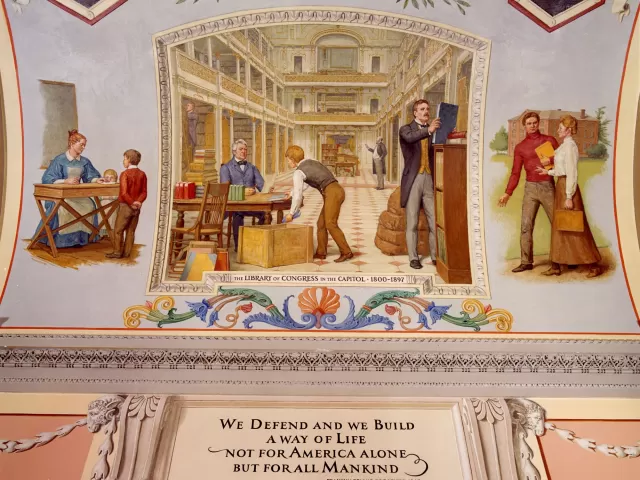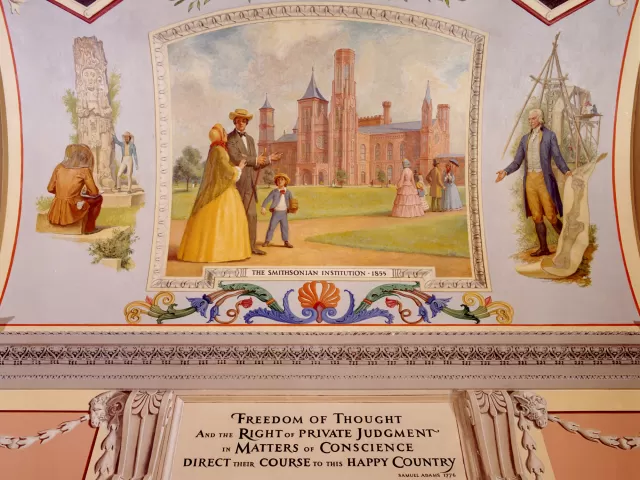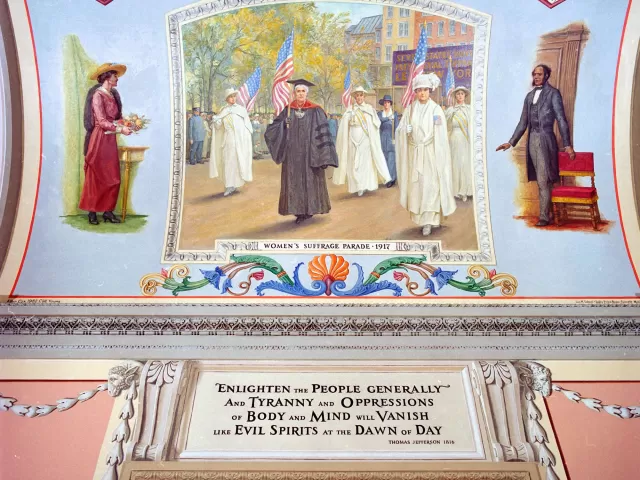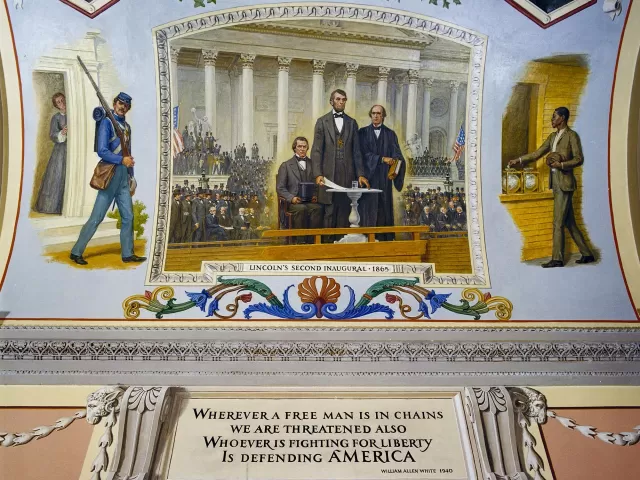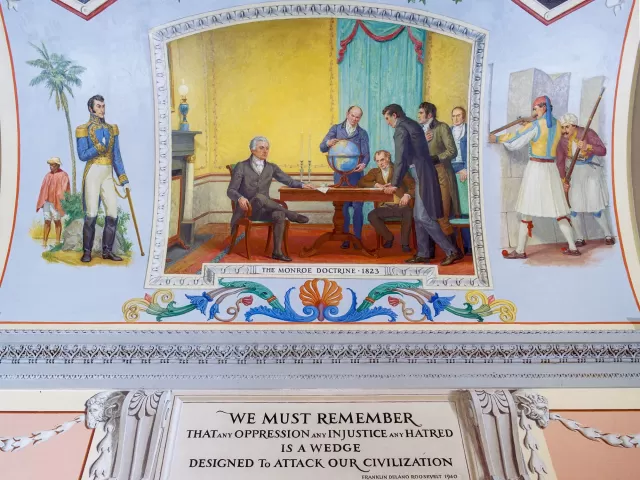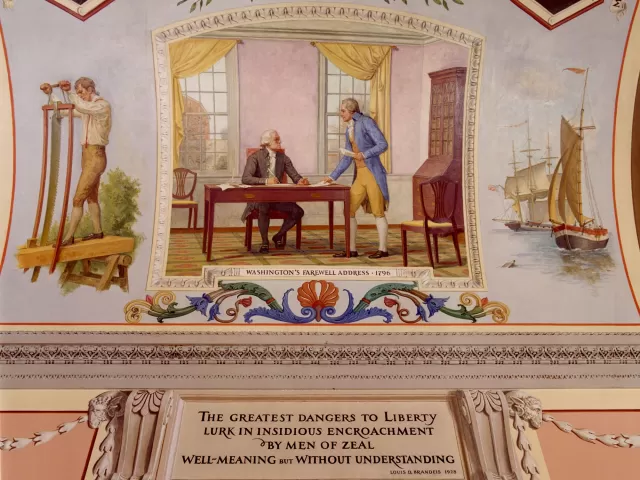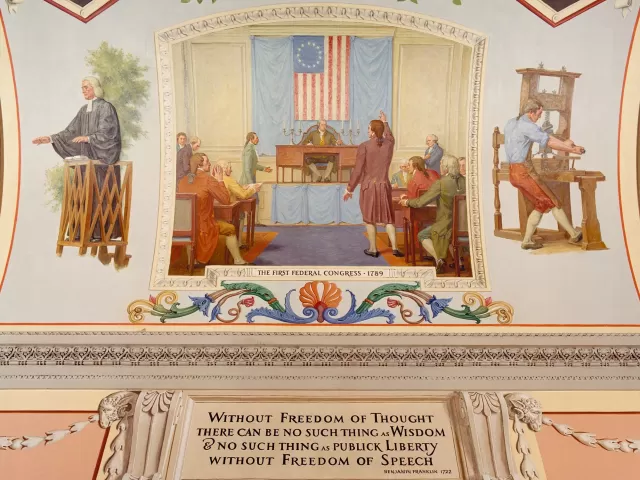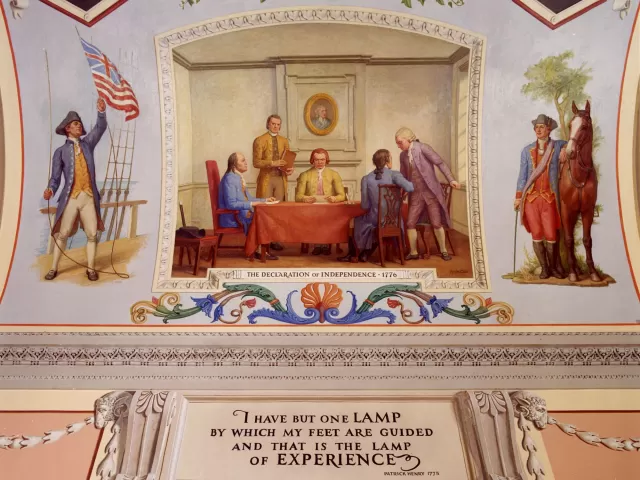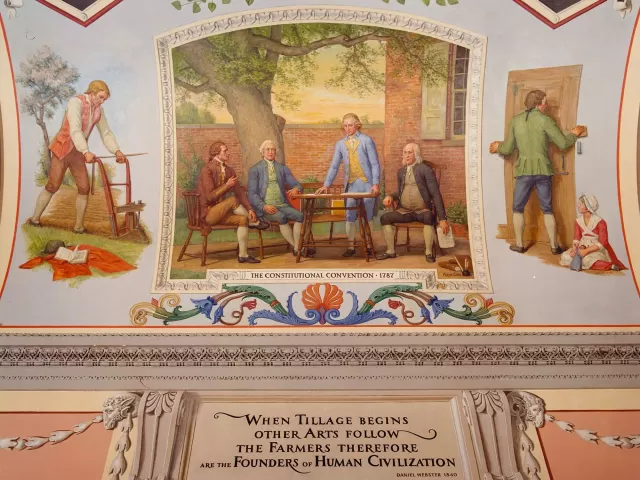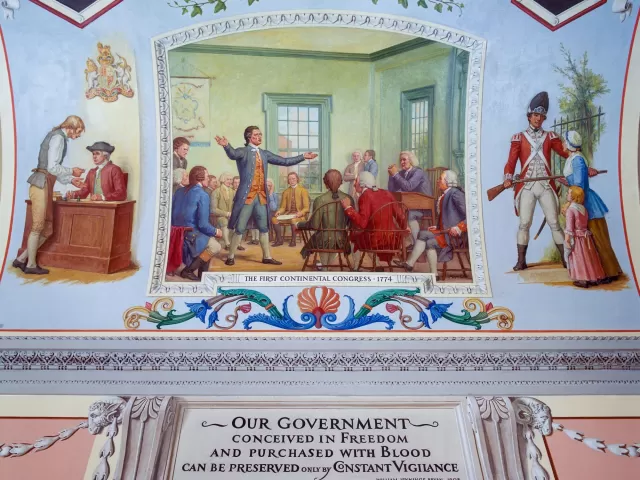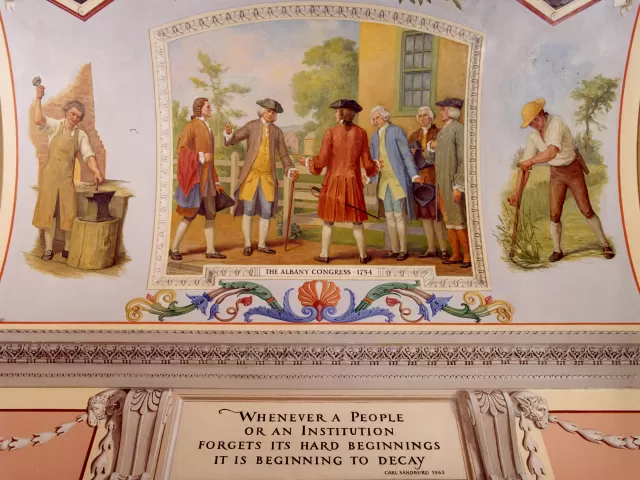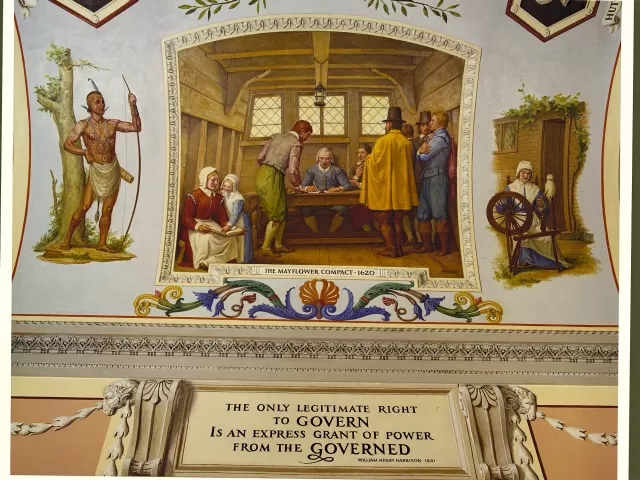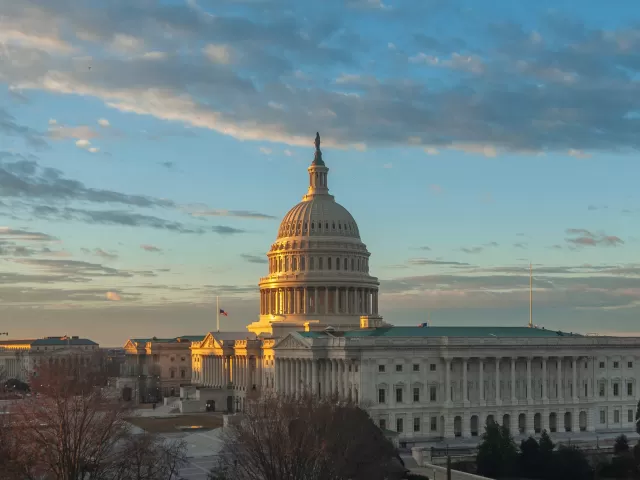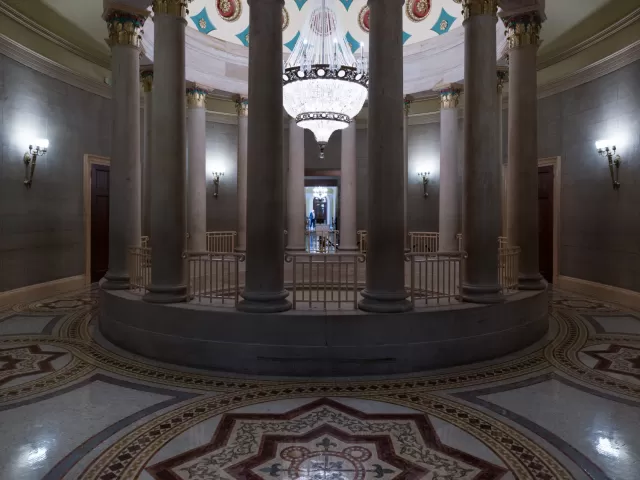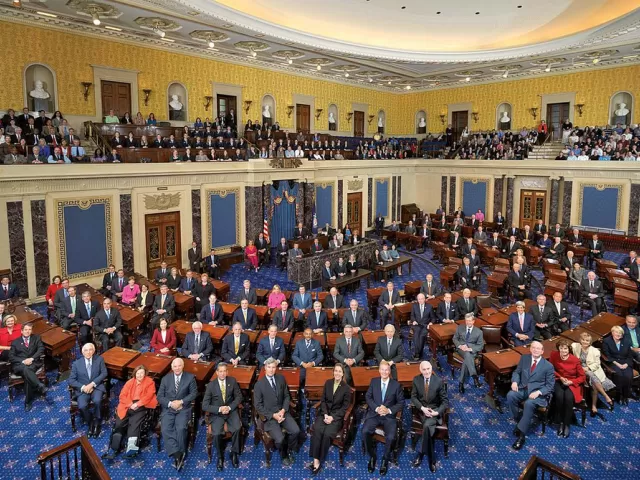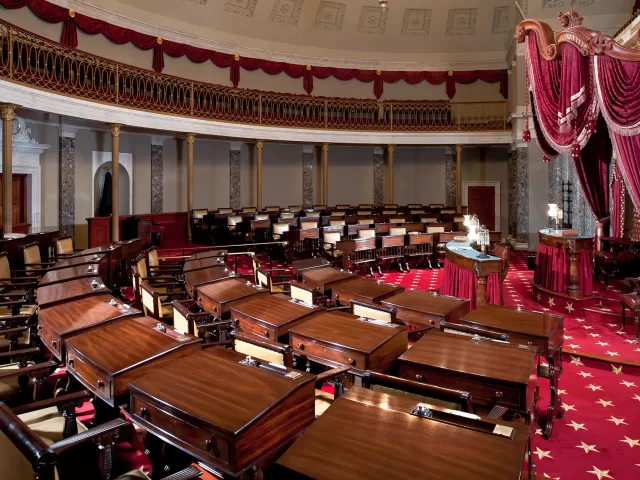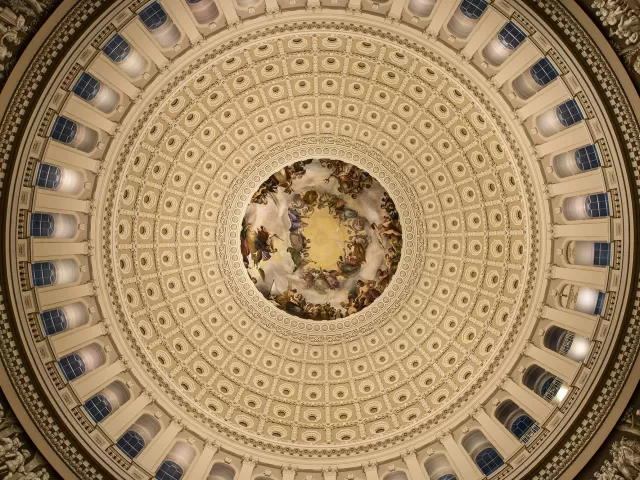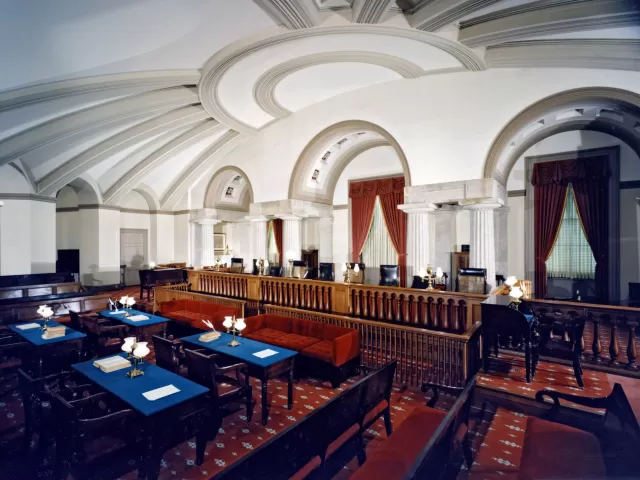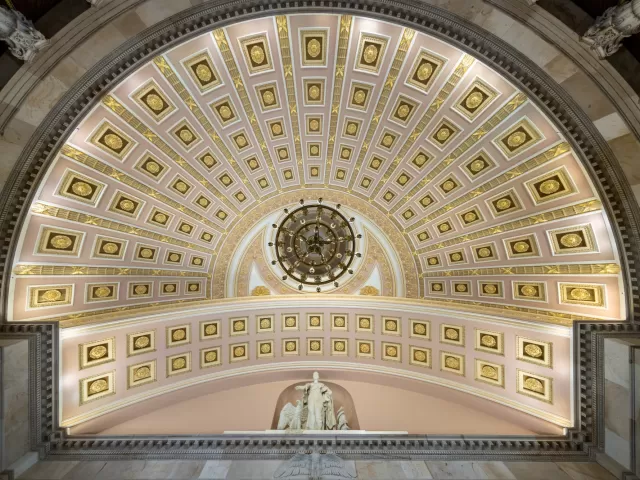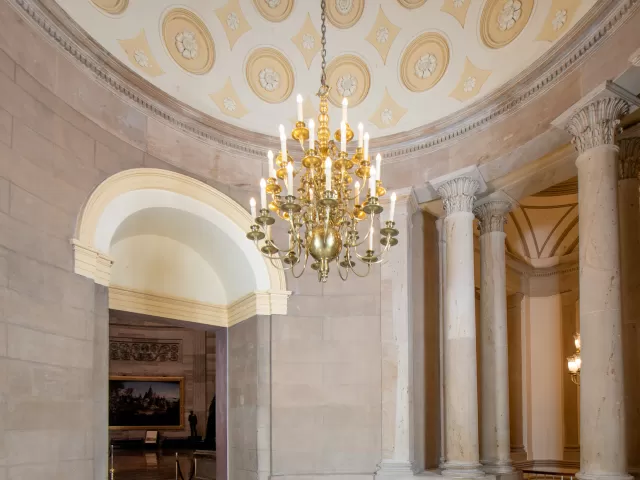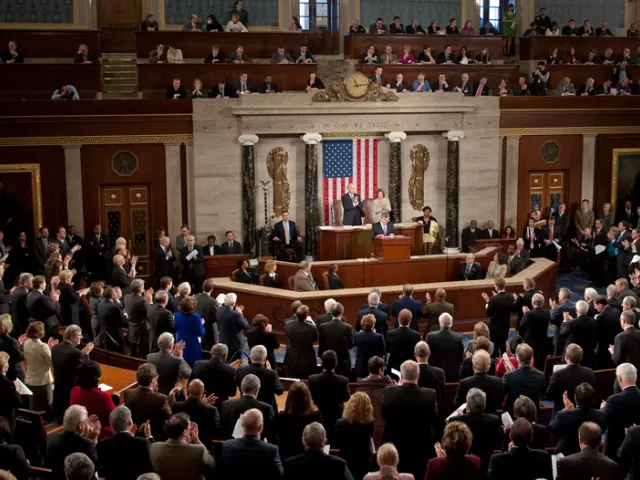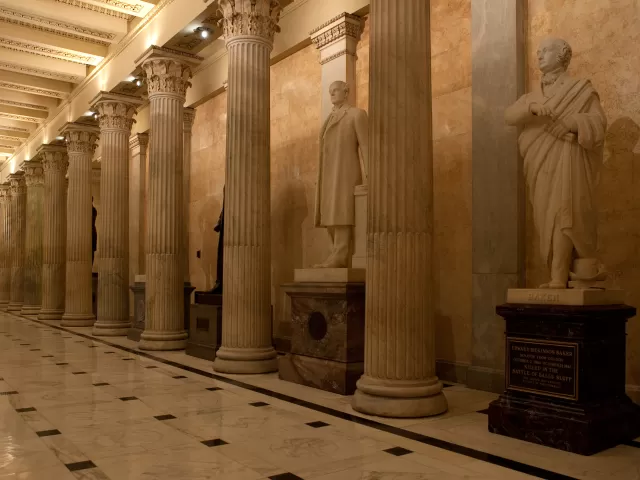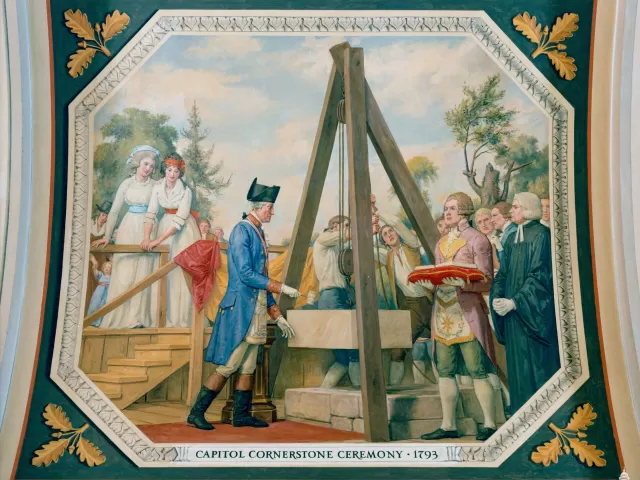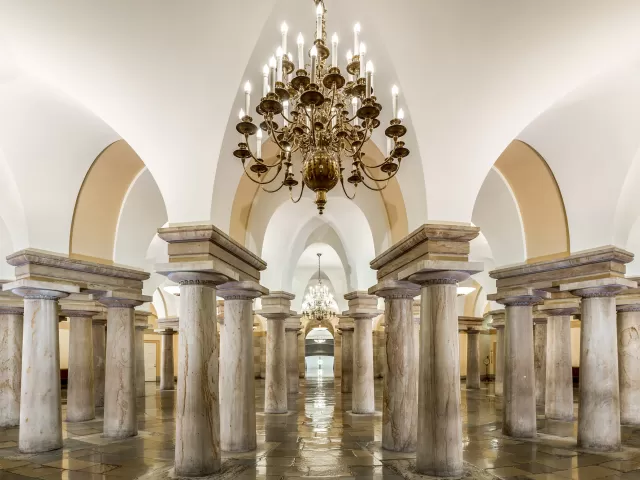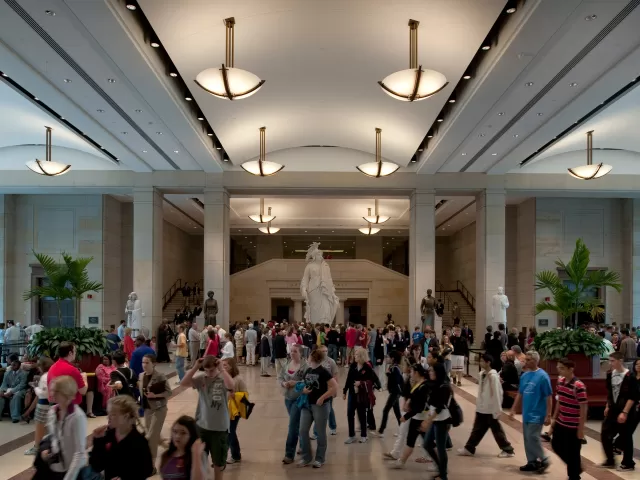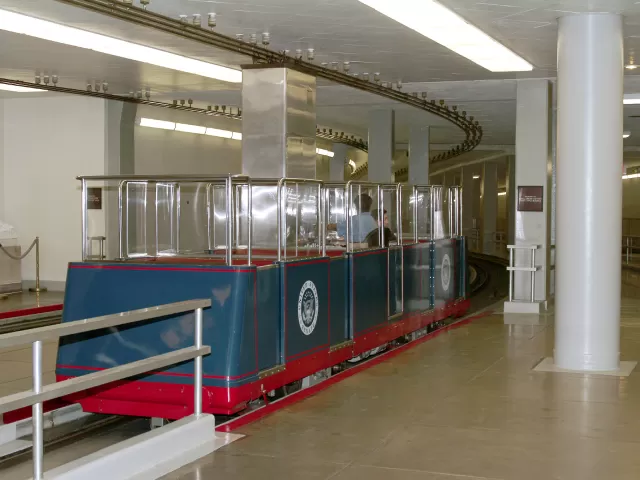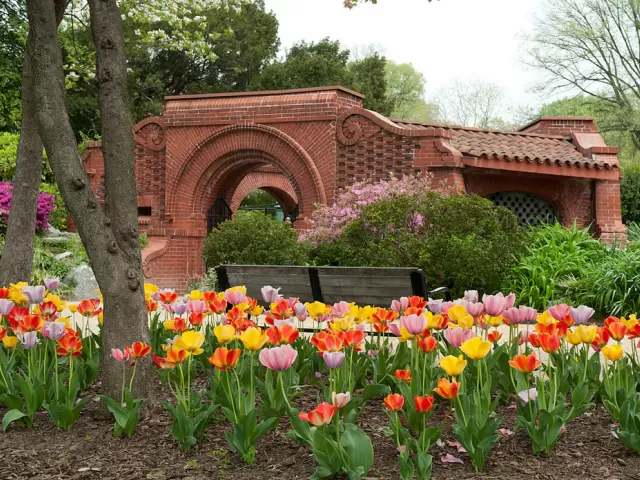Displaying 151 - 180 of 510 Clear
Highlight
Spanish-American War hero Theodore Roosevelt became president in 1901, and during his two terms in office he worked vigorously to regulate big business, encourage conservation programs and expand America's role in foreign affairs. The mural shows Roosevelt giving one of his characteristically
Highlight
The expansion and industrialization of America required iron and steel for railroads, bridges, skyscrapers, and tools. The mural shows work at the foundry of the Nashua, New Hampshire, Iron Company. Left: Women leave their homes to work in a factory, symbolizing a change in American society brought
Highlight
In 1802 American inventor Oliver Evans developed a high-pressure steam engine that produced more power and weighed less than earlier models. His design made it practical to use steam power for land vehicles, such as trains, or boats. The mural is set in 1804 and depicts the nation's first steam
Highlight
In 1783 Representative James Madison introduced a resolution to create a library that would give the Congress access to works about the laws of nations and about American history and affairs. The Library of Congress was founded in 1800 and located in one room in the Capitol; as the collection grew
Highlight
The Smithsonian Institution, which today includes approximately two dozen museums and research centers, was founded in 1846. It was named for English scientist James Smithson, who bequeathed his estate to the United States to create an establishment "for the increase and diffusion of knowledge among
Highlight
For decades after America won its independence from Great Britain, many of its people still lacked basic rights. The drive for woman suffrage was formalized at the 1848 women's rights convention in Seneca Falls, New York, but not until 1920 (with the ratification of the nineteenth amendment to the
Highlight
At his March 4 inaugural on the steps of the newly completed Capitol, Lincoln expressed his hopes for reconstruction of the Union after the Civil War. He urged moderation, humility, and humanity in dealings with the South. Shown in the center of the scene (from left to right) are Vice President
Highlight
Responding to Russian territorial claims along the northern Pacific coast, and concerned that European nations would attempt to seize recently independent Latin American states, President James Monroe announced a new national policy. No new colonies would be allowed in the Americas, and European
Highlight
In his farewell address at the end of his second term as president, George Washington urged America, "Observe good faith and justice toward all nations. Cultivate peace and harmony with all." He is depicted here at his desk with Alexander Hamilton, who helped him write the address. Left: The sawyer
Highlight
Meeting in New York at Federal Hall, the first federal Congress initiated the committee system, levied taxes and imposts, and enacted a judicial system. The Senate exercised its powers of advice and consent. Most important, the Congress passed the first ten amendments to the Constitution, which
Highlight
In June 1776 five delegates to the Second Continental Congress drafted the Declaration of Independence. The mural depicts (from left to right) Benjamin Franklin, Roger Sherman, Thomas Jefferson, Robert Livingston, and John Adams. On the wall in the background is a portrait of English philosopher
Highlight
Following the Revolutionary War, the new American government was first organized under the Articles of Confederation, but that document gave the federal government too little authority to be effective. Convened to amend the Articles of Confederation, this convention wrote a new Constitution that
Highlight
Delegates from twelve colonies met in 1774 in Philadelphia to discuss responses to increased British oppression. This convention, the First Continental Congress, formally declared that colonists should have the same rights as Englishmen; they also agreed to form the Continental Association, which
Highlight
In 1754 the British government asked colonial representatives to meet in Albany, New York, to develop a treaty with Native Americans and plan the defense of the colonies against France. Exceeding these limited objectives, the assembly adopted a plan developed by Benjamin Franklin for government of
Highlight
The Mayflower Compact, a document signed aboard the ship Mayflower in 1620, set forth principles of tolerance and liberty for the government of a new colony in the New World. Pilgrim leader William Brewster is shown signing the document; John Standish, the colony's military leader, stands at left
Place
At the U.S. Capitol Building the Senate and the House of Representatives come together to discuss, debate and deliberate national policy; develop consensus; and craft the country's laws.
Place
In the pre-fire period this elliptical space housed the Senate wing’s main staircase. Benjamin Henry Latrobe remarked to Thomas Jefferson that "it was one of the most remarkable parts of the Capitol."
Place
The nation's 100 senators sit at individual desks arranged on a tiered semicircular platform facing a raised rostrum. A visitor's gallery overlooks the chamber on four sides.
Place
Located north of the Capitol Rotunda is the richly decorated Old Senate Chamber. Designed by Benjamin Henry Latrobe, this room was home to the U.S. Senate from 1819 until 1859 and later to the U.S. Supreme Court from 1860-1935.
Place
Conceived in the age of neoclassicism, the Rotunda was intended to recall the Pantheon, the ancient Roman temple. Bulfinch created in the U.S. Capitol Rotunda an ambitious orchestration of architecture, sculpture and painting.
Place
In addition to housing the Supreme Court, this space later served as a committee room, a law library, a meeting room, and a storage room. Today, it has been restored to its mid–19th-century appearance.
Place
National Statuary Hall is one of the most popular rooms in the U.S. Capitol Building. It, and its collection of statuary from individual states, is visited by thousands of tourists each day and continues to be used for ceremonial occasions.
Place
In the south wing, Latrobe created a progression of spaces from the entrance door on the first floor up a grand staircase to the small rotunda in front of the principal doorway leading into the Hall of the House (now called National Statuary Hall).
Place
The House Chamber, also known as the "Hall of the House of Representatives," is a large assembly room located in the center of the U.S. Capitol's south wing.
Place
The hall was constructed in the mid-19th century as part of architect Thomas U. Walter's extension of the Capitol, which added the present House and Senate wings and the dome.
Place
The murals and decorations complement those in the Brumidi Corridors in the Senate wing of the U.S. Capitol.
Place
This center section of the building was completed in 1827 under the direction of the third Architect of the Capitol, Charles Bulfinch.
Place
The U.S. Capitol Visitor Center is the newest addition to the historic Capitol Complex. At nearly 580,000 square feet, the Visitor Center is the largest project in the Capitol's more than two-century history and is approximately three-quarters the size of the Capitol itself.
Place
The U.S. Capitol subway consists of three lines: two on the Senate (north) side of the Capitol, and one on the House (south) side of the Capitol.
Place
Construction on the Summerhouse began in 1879 and was completed in late 1880 or early 1881 by landscape architect Frederick Law Olmsted.
